The Golden Rule You Need To Know Before Moving A Casualty
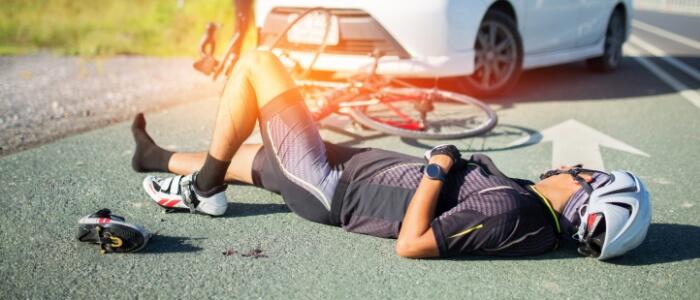
Whether you find a person lying outside their car after a major collision, or your hiking partner falls off the edge of the cliff onto a lower ledge, or you’ve stumbled across someone that’s unconscious but you’re not sure why, if it’s safe for you and the casualty always provide First Aid to them in the position you found them.
This golden First Aid rule also minimises the chance of you causing further damage. It might not be clear to you that the casualty has suffered a major injury such as spinal damage, a skull fracture or a broken leg, so you should always approach moving a casualty with caution because there is always a risk of increasing the severity of an injury if you do decide to move them.
Of course, sometimes the casualty needs to be moved to safety in order to provide First Aid or taken to get medical assistance, if this is the case follow our step-by-step guide on how to move a casualty safely.
When Should You Move A Casualty?
Following the DRSABCD action plan, the first thing you always do when discovering someone in need of First Aid is check for danger. This includes the consideration of danger to you and danger to the casualty. If it’s dangerous for the casualty to remain in the position they are in and reasonably safe for you to quickly remove them, do so.
It’s always recommended to wait for medical assistance to arrive to move or transport a seriously injured person but if you’re in a remote location the time it could take for medical assistance to arrive could have serious consequences so in this instance you will need to move the casualty to ensure they have the best chance of recovery.
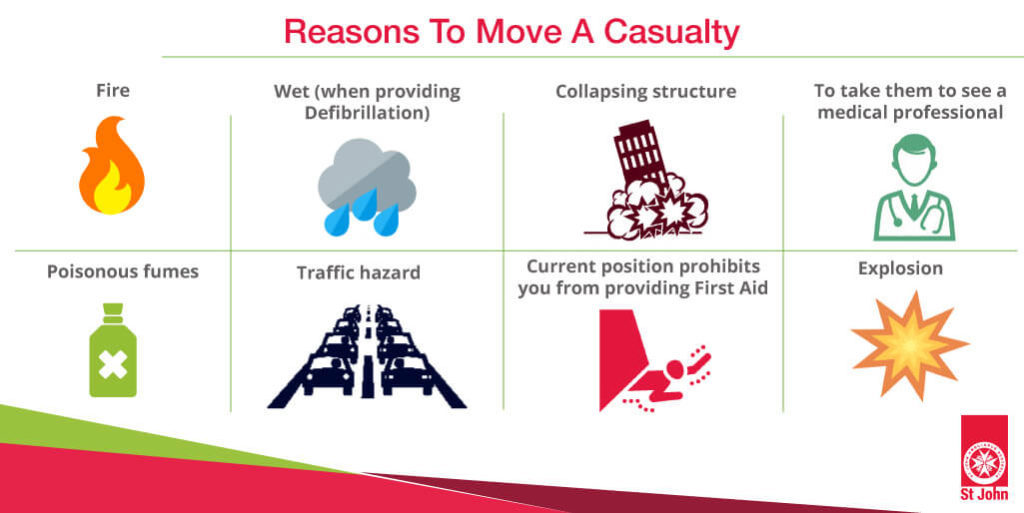
Things To Remember When Moving A Casualty
Whether the casualty has suffered a serious or minor injury it’s always important to consider the best strategies when moving a casualty.
| You SHOULD: | You should NEVER: |
|
· Always use correct lifting techniques (bend at the knees, back straight, head up) · Ask the casualty what would be most comfortable for them (if conscious) · Ask the casualty if they are able to support themselves by holding on to you (if conscious) · Ask for assistance from others |
· Put yourself in danger · Bend and/or put weight on your back |
Always follow these lifting techniques when moving a casualty:
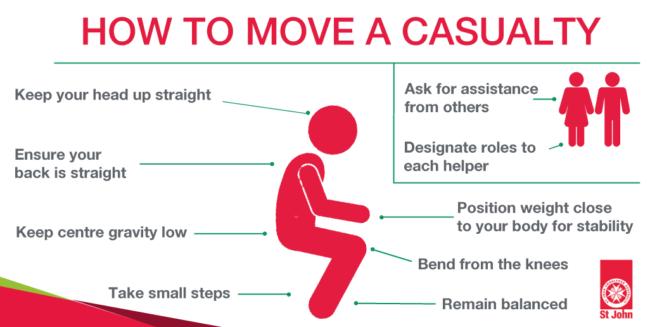
Lifting A Casualty
- Follow DRSABCD
- Manage all wounds
- Immobilise any fractures
- Calmly explain to the casualty how you are going to move them and why
- Ask for assistance from the casualty if possible
- Ensure the casualty feels secure
- Always seek assistance from others if available
- Hold the casualty firmly
- Avoid any hazards
Moving A Casualty With Assistance From Another
If the casualty has suffered an injury to their leg and can support themselves gently on the other you can use a human crutch to help transport them. This will not cause any further injury if performed correctly.
Moving A Casualty With A Human Crutch
- Help the casualty to stand
- Position a person on either side of the casualty, shoulder to shoulder
- First Aiders to position the casualty’s arm around their shoulders and hold onto their wrists
Moving A Casualty With Different Types Of Human Seats
If the casualty is unable to support themselves in a human crutch there are three common and safe lifting techniques which can be used to move a casualty. These include:
Two-Handed Seat
A two-handed seat can be used for a conscious casualty who cannot put pressure on either leg, requires support from both First Aiders and can be comfortably carried whilst seated. A two-handed seat involves each First Aider to:
- hold the opposite wrist of the other First Aider (left to right or right to left)
- squat to a height that the casualty can easily sit on the hands
- steadily rise at the same time
- Use crossover step to walk
Four-Handed Seat
If a casualty is able to use their hands or arms to help hold themselves stably you can use the four-handed seat. A four-handed seat involves each First Aider to:
- hold each opposite wrist of the other First Aider (left to right and right to left)
- squat to a height that the casualty can easily sit on the hands
- position the hand-seat midway down the casualty’s thigh
- place the casualty’s arms around each First Aiders shoulders
- steadily rise at the same time
- Use crossover step to walk
Fore And Aft Lift
If you are required to move a casualty through a narrow space you should use the fore and aft lift. This involves:
- One First Aider standing in front of the casualty and one First Aider behind the casualty
- The First Aider behind the casualty must take hold of the casualty from underneath their underarms, in a hugging style hold
- The casualty’s head and shoulders should be positioned up straight against the First Aider located behind them
- The First Aider in front of the casualty must take hold of the casualty from underneath the knees
- Both First Aiders must bend at the knees, keep their back straight, take hold of the casualty and lift
- The First Aiders must walk in unisons
No matter what the injury, severity or reason to move the casualty you must always consider the safest and simplest method to move them before commencing. The greatest risk when moving a casualty is causing further harm, so always ensure the possibility of that occurring is slim before you decide to do so.
Remember, in the case of a serious injury the only time you are required to move a casualty is if they are in danger of further harm, you cannot provide First Aid to them in the position that they are in or you need to take them to seek medical assistance because you are in a remote area. If the injury is not life threatening but the casualty requires medical assistance or review you can safely help move the casualty with a human crutch or seat.
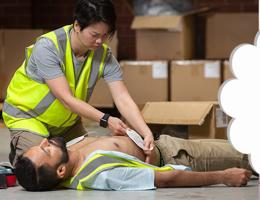
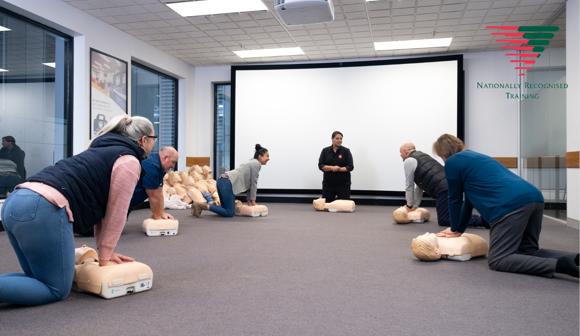
PROVIDE FIRST AID
Learn how to manage a range of common first aid scenarios.
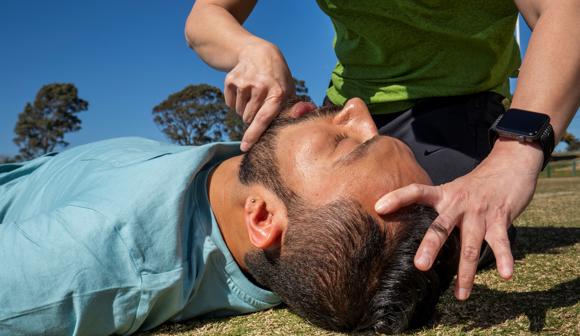
PROVIDE FIRST AID IN REMOTE SITUATIONS
Learn how to provide First Aid in remote areas where access to medical aid is difficult or delayed, including alpine, desert, marine, rural and tropical environments.
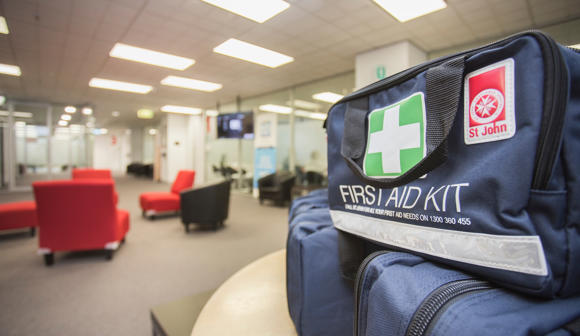
DO YOU HAVE THE RIGHT FIRST AID KIT FOR YOUR HOME, SCHOOL OR WORKPLACE?
St John has a range of First Aid products to suit any situation.
